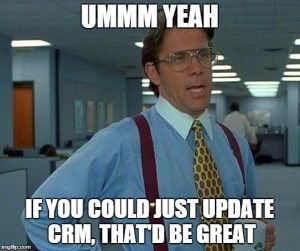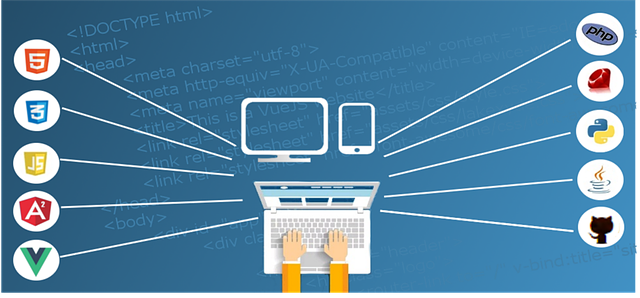Are you familiar with the role of a Customer Relationship Management system in business success? Do you wonder how a well-implemented CRM can pave the way for improved sales and customer retention? Have you ever thought about the potential issues that could arise from a mismatched or improperly utilized CRM?
Many businesses struggle with incorporating their CRM systems into their day-to-day operations effectively, often due to poorly designed interfaces, inadequate training, or a mismatch between the system features and business needs (Bull, 2003). This can lead to underutilization and missed opportunities for maximizing customer relationships (Buttle & Maklan, 2015). A strategic intervention may involve identifying the key needs of your business, weighing these against the features of various CRM options, and ensuring ample training and support for your team.
In this article, you will learn about the essential characteristics of a successful CRM, starting with the vital importance of proper alignment with business structure and needs. We will then dive into the tools and features that can considerably boost efficiency, followed by the significance of user-friendliness for broader adoption, and finally, the need for robust support and training to ensure optimal usage and benefits.
Immense value can be derived from a well-chosen, properly implemented, and efficiently utilized CRM system. With a holistic understanding of these components, you can elevate your own CRM experience, cultivating stronger relationships with customers and ultimately fostering the growth and success of your business.

Definitions and Meanings of a Successful CRM
A successful Customer Relationship Management (CRM) is a strategic tool that helps businesses effectively manage and nurture their relationships with customers. It is a technology system that manages a company’s interactions with potential and existing customers, aiming to improve customer satisfaction, retention, and business efficiency. For a CRM to be considered successful, it should be capable of gathering and analyzing customer data, facilitating quick and effective communication, personalizing customer services, and predicting customer behaviors. Hence, it is not merely a technology, but a comprehensive strategy to understand and respond to customer needs and preferences.
Unraveling the Secrets of a Successful Customer Relationship Management
Key Elements of Successful Customer Relationship Management
A successful Customer Relationship Management (CRM) system navigates the complex world of business relationships, enabling businesses to maximize effectiveness, drive sales, and improve customer satisfaction. A crucial part of CRM success lies in its strategic alignment with the overall business direction. That is, it should not be viewed as a standalone tool, but an integral part of a company’s customer engagement and business strategy.
Business enterprise applications
Microsoft 365 Apps for Enterprise
Enterprise Business apps generator
First, it’s essential to understand your customers and their needs deeply and thoroughly. Data from various touchpoints across the customer journey should be analyzed and used to inform proactive strategies, personalizing customer interactions and creating tailored experiences. Leveraging technologies such as predictive analytics and machine learning can enable businesses to glean valuable insights from this data, predicting customer behaviors, identifying trends, and indicating potential opportunities or risks.
How to Implement and Optimize CRM for Success
Implementing and optimizing a CRM system for success is a multifaceted process. The first factor to consider is user adoption. A CRM system could have all the bells and whistles, but it wouldn’t mean much if the staff members are unwilling or unable to use it. Training is crucial to ensure that every employee understands the CRM system and how it can help them in their job roles. Clear communication about the benefits of CRM and continuous training can help in enhancing user acceptance.
- Integration: Integrating the CRM with other key business systems helps to smooth internal business processes and provides a unified customer view.
- Customization: Not all businesses are the same. Customizing your CRM to suit your unique business processes and requirements can further enhance its value.
- Mobile Access: Robust mobile access is a non-nonsense requirement in today’s fast-paced, always-on business environment. It allows for anytime, anywhere access and real-time updates.
- Performance Metrics: The use of performance metrics can assess the effectiveness of CRM and identify bottlenecks. This allows for timely enhancements to the CRM system.
At its core, successful CRM is all about harnessing the power of data and technology to put the customer at the heart of your business. It consolidates multiple streams of data into one easily navigable platform, enabling businesses to make data-driven decisions and form strategic insights. Effective CRM provides an inclusive picture of the customers, encouraging meaningful interactions that enhance customer loyalty and ultimately grow the business.
Unlocking the Potential: Strides Towards a High-Performing CRM
Is Your CRM Achieving Its Full Potential?
Challenging the status quo, let’s ask ourselves a thought-provoking question: is our Customer Relationship Management system (CRM) meeting all our expectations? Is it fostering valuable connections, bolstering sales, and simplifying our workflow? Regrettably, in numerous instances, CRMs are underutilized, functioning like glorified address books rather than powerful business tools. The central idea here is that a successful CRM does more than just store business contacts. As a tool, CRM aligns sales, marketing, and customer service teams, streamlining processes, and cultivating customer relations.
The Pitfalls of Misuse and Underutilization
Delving deeper into the issues primarily responsible for the underperformance of many CRM systems, we uncover two main culprits: misuse and underutilization. Misuse often emerges from an inadequate understanding of the CRM’s features or a lack of updated training. The latter provokes lackluster commitment to the system and consequently, a fallover in its use or worse, its misuse. On the other hand, underutilization tends to occur when companies only leverage the rudimentary contact management features of CRM software, ignoring the wealth of other resources these systems offer. This underutilization stems from an underestimation of the capabilities of the CRM and consequently does injustice to the software. Both misuse and underutilization diminish the potential of the CRM software; they deny companies the chance to capitalize on a tool that could significantly enhance their efficiency and performance.
Exemplary Use of CRM Tools
Pivoting towards the more promising side, there are myriad companies that have realized the full potential of their CRM systems. Enterprise Rent-A-Car, for example, integrated a CRM system that consolidates customer feedback from online and offline sources, incorporating customer sentiments into their business decisions. Thus, the company has garnered recognition for its excellent customer service, enabled by the comprehensive analysis of its CRM system. Salesforce, a renowned CRM software provider, employs its own CRM for its sales, marketing, and service departments. Using a CRM within the company itself, Salesforce demonstrates the efficiency and effectiveness of a holistic approach to their business operations. These examples underscore the transformative power of CRM systems when rightly understood and expertly used, serving as inspiration for organizations aiming to optimize their CRM systems.
Navigating the CRM Jungle: Distilling Success Factors in Customer Relationship Management
Unlocking the Riddle of Effective CRM
What elements determine the triumph or failure of a customer relationship management (CRM) strategy? As businesses navigate the complex world of CRM, identifying success factors becomes a crucial task. Foremost, a flourishing CRM strategy calls for an emphasis on customer interaction. This entails understanding your customers’ needs and providing solutions tailored to them. This is a critical step as it fosters a customer-centric culture which is at the heart of any fruitful CRM program. A successful CRM strategy also needs to be measurable. Data gathering and analysis play a pivotal role in understanding customer behaviour and refining interaction methods. Here, analytics come into play, providing companies with insights into customer behaviours and trends, equipping them to adapt their product offerings and marketing strategies accordingly.
Unravelling Challenges in the CRM Terrain
On the flip side, businesses face several hurdles when implementing CRM strategies. The major impediment being a lack of understanding of its importance at the leadership level. Many enterprise leaders see CRM only as a software tool rather than a holistic business approach to improve customer interaction and loyalty. This misconception leads to inadequate resource allocation, leading to poor CRM execution. Another common stumbling block is the resistance to change. Implementing a CRM strategy often requires significant changes in business processes and employee behaviour. It becomes a challenge if employees fail to see the benefits of these changes or fear that it could threaten their jobs. Hence, change management becomes imperative during CRM implementation, where a clear communication strategy and employee training programs need to be established.
Leading the Pack: Exemplary CRM Practices
Several companies stand out for their effective CRM practices, providing valuable lessons to those embarking on their CRM journey. Amazon is one such company that has championed the art of customer personalization using CRM. Amazon uses its CRM to gather and analyze customer data, facilitating highly personalized recommendations and offers. This approach not only improves their sales but also enhances customer satisfaction and loyalty. Zappos, another behemoth, has been lauded for its customer service, an integral part of its CRM. The company trains its customer service reps to build personal connections with customers instead of focusing on transactional interactions. This commitment to customer satisfaction can turn first-time customers into lifetime devotees. These indicators show that a successful CRM strategy, despite its challenges, is a clear determinant of business success.
Conclusion
Curious about how an effective client relationship management system propels a business to astronomical heights of success? One prime example is a corporation that not only enjoys enhanced customer satisfaction but integrates all dimensions of their firm into one comprehensive database, thus increasing operational effectiveness, molding each business decision and strategy based on concrete customer metrics, and driving an upsurge in net revenue.
Please, join our adventurous journey as we navigate through the captivating world of CRM, shattering prevalent myths, and ushering in unrivaled insights honed from field experts and thought leaders. You won’t regret coming along for this enlightening ride, where each blog post promises to offer not just interesting information, but also actionable intelligence, guaranteed to aid your quest for achieving success in today’s competitive markets.
Finalizing, dear readers, there’s so much to look forward to in our future releases. Each publication will unravel unique aspects of a successful CRM, paving your path to mastery of the subject. Stay tuned, stay updated, and let’s transform the way client relationships are managed, together. Harness the power of an effective CRM and watch your business soar to unprecedented heights. Until next time, remember – the customer is king, and CRM is the key to their kingdom.
F.A.Q.
1. What does CRM stand for in business?
CRM refers to Customer Relationship Management. It is a strategy, technology, and process used by businesses to manage and improve their interactions and relationships with their customers.
2. What are the key elements of a successful CRM?
The key elements of a successful CRM include efficiency, collaboration, technology, accessibility, and customer-focused strategies. These elements work together to improve customer service, increase sales, and enhance customer engagement.
3. How can a CRM system contribute to a business’s success?
A CRM system can help a business succeed by improving customer service and satisfaction. Additionally, it can streamline processes, enhance productivity, and ultimately, contribute to increased sales and revenue.
4. What is the difference between a successful CRM and an average one?
A successful CRM is differentiated by its ability to adapt to the specific needs and goals of the organization. It also measures its success in terms of customer satisfaction, customer retention, and profitability, as opposed to an average CRM which might just focus on basic operational efficiencies.
5. Can a business thrive or succeed without a CRM system?
Yes, a business can succeed without a CRM system, but it might not be as efficient or customer-centric as it could be with one. CRM systems simplify and automate a lot of processes, which can be essential for growth and competitiveness in today’s fast-paced business environment.



